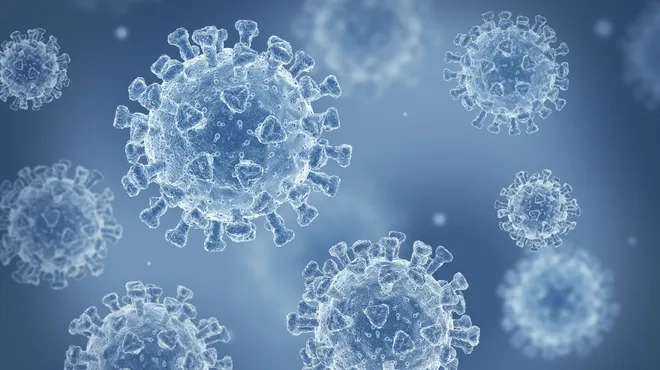The latest CDC data reveals that more than half of U.S. states are experiencing ‘high’ levels of wastewater activity, with several Midwestern states showing the highest test positivity rates of COVID-19 over the past week.
Recent data from the Centers for Disease Control and Prevention (CDC) indicates that more than half of U.S. states are experiencing “very high” levels of COVID-19 activity.
The CDC uses wastewater testing to detect traces of infectious diseases within communities. As of August 9, data shows that 27 states have reported “very high” levels of viral activity in wastewater across the nation.
Here are the latest figures on wastewater viral activity levels for states and territories as of August 9.

If you want to see the table? Click here to view it.
COVID-19 Current Wastewater Viral Activity Levels Map
Table of Contents
ToggleWastewater Viral Activity Level

COVID is now endemic: Reports
In a recent NPR interview, CDC health officials have now classified COVID-19 as “endemic.”
Aron Hall, Deputy Director for Science at the CDC’s Coronavirus and Other Respiratory Viruses Division, stated, “At this point, COVID-19 can be described as endemic throughout the world.”
An endemic is defined as a disease that consistently circulates within a community at a predictable level, despite occasional outbreaks, according to the South Carolina Department of Health and Environmental Control.
What is the current variant that has the highest amount of COVID-19 cases?
According to the CDC’s Nowcast data tracker, the KP.3.1.1 variant is currently responsible for 27.8% of positive COVID-19 cases, while the KP.3 variant accounts for 20.1% in the two-week period from July 21 to August 3.
Rosa Norman, a CDC spokesperson, explained to USA TODAY, “The KP.3.1.1 variant is very similar to other circulating variants in the United States. All current lineages are descendants of JN.1, which emerged in late 2023.”
Changes in COVID-19 test positivity within a week
According to data collected by the CDC and posted on August 12, 2024, six Midwestern states in Region 5 experienced the largest increase in positive COVID-19 cases, with a 2.1% rise from July 28 to August 3, 2024. The CDC organizes positivity rates based on regions as defined by the U.S. Department of Health and Human Services.
Here’s a summary of the changes in COVID-19 positivity rates by region for the past week:
- Region 1 (Connecticut, Maine, Massachusetts, New Hampshire, Rhode Island, and Vermont): +1.4%
- Region 2 (New Jersey, New York, Puerto Rico, and the Virgin Islands): -1.3%
- Region 3 (Delaware, District of Columbia, Maryland, Pennsylvania, Virginia, and West Virginia): +1.3%
- Region 4 (Alabama, Florida, Georgia, Kentucky, Mississippi, North Carolina, South Carolina, and Tennessee): +1.4%
- Region 5 (Illinois, Indiana, Michigan, Minnesota, Ohio, and Wisconsin): +2.1% (highest increase)
- Region 6 (Arkansas, Louisiana, New Mexico, Oklahoma, and Texas): +1.5%
- Region 7 (Iowa, Kansas, Missouri, and Nebraska): +0.9%
- Region 8 (Colorado, Montana, North Dakota, South Dakota, Utah, and Wyoming): -1.2%
- Region 9 (Arizona, California, Hawaii, Nevada, American Samoa, Commonwealth of the Northern Mariana Islands, Federated States of Micronesia, Guam, Marshall Islands, and Republic of Palau): -3.1% (largest decrease)
- Region 10 (Alaska, Idaho, Oregon, and Washington): +1.2%
COVID-19 symptoms
The CDC has not specified if the KP.3 or KP.3.1.1 variants have distinct symptoms. However, Rosa Norman has indicated that symptoms associated with KP.3 are similar to those of the JN.1 variant. The CDC provides information on general COVID-19 symptoms, which can appear between two and 14 days after exposure and may vary from mild to severe. For the latest updates on symptoms and variants, it’s best to consult the CDC’s official website.
The CDC advises seeking medical attention if you experience the following symptoms:
- Difficulty Breathing: Severe trouble breathing or feeling like you can’t get enough air.
- Persistent Pain or Pressure in the Chest: Ongoing discomfort or pressure in the chest area.
- Confusion: Sudden or severe confusion, difficulty staying awake, or inability to stay alert.
- Bluish Lips or Face: A bluish tint to the lips or face, indicating potential low oxygen levels.
- Severe Fatigue: Extreme fatigue that impacts daily activities or alertness.
If you or someone you know experiences these symptoms, it’s important to seek immediate medical help.
Stay informed about regional COVID-19 trends and updates by checking out our Regional Data Reports.






